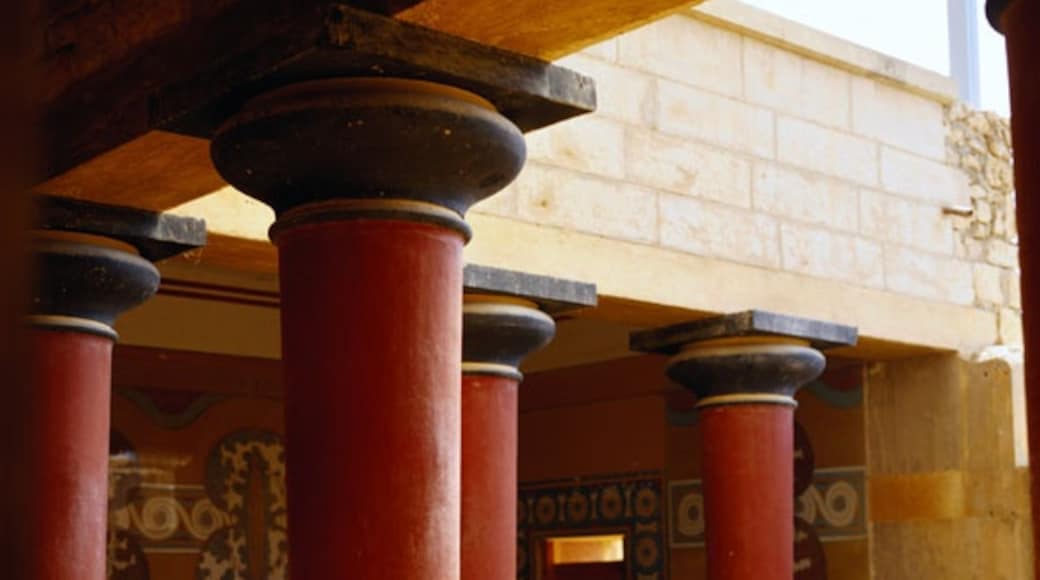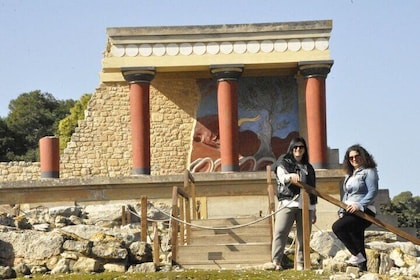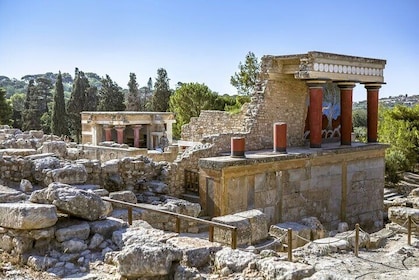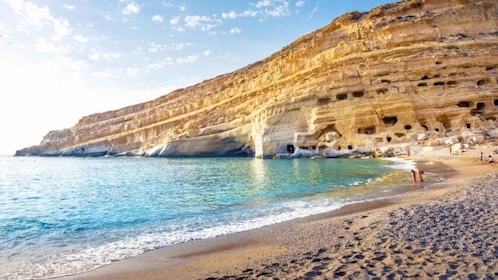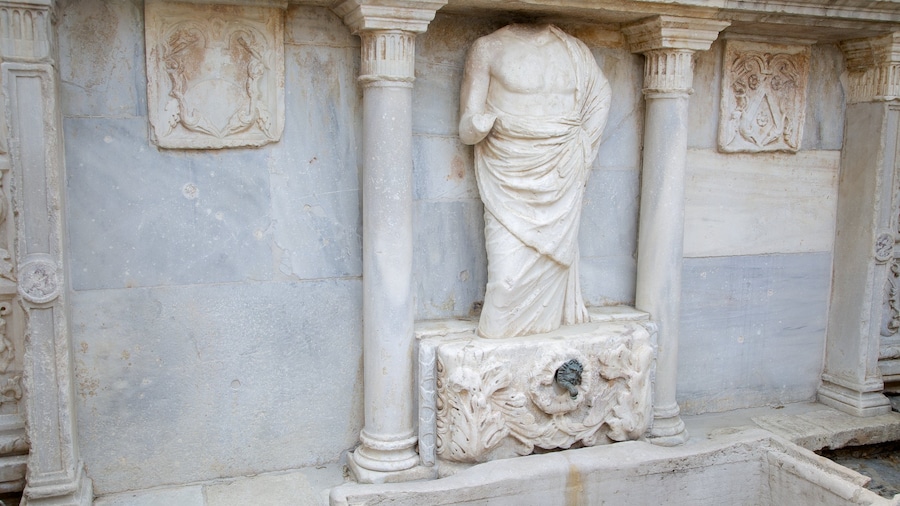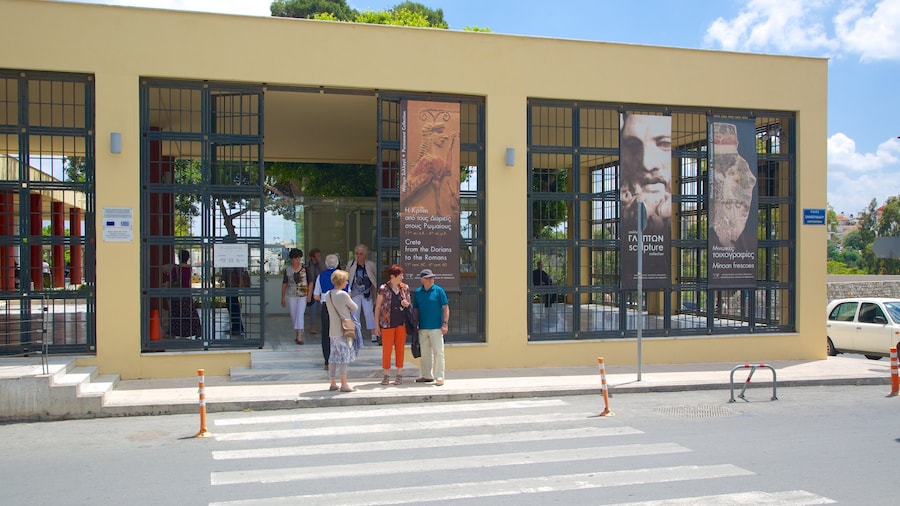Walk through the chambers of Minoan kings and queens at Knossos and marvel at the grandeur of the ancient buildings. Explore the labyrinthine layout and learn the story of what happened to the mythical architect, Daedalus. Take a tour to find out what treasures have been discovered here since excavations began.
The Palace of Knossos is the largest Bronze Age archaeological site in Greece. It served as the political and religious centre of the Minoan civilization until it was destroyed around 1375 B.C. In 1900, the archaeologist Arthur Evans began an extensive excavation and restoration project the result is one of the most important and impressive historical sites in Europe.
Make your way up the entrance ramp. You’ll soon see why Greek myths evolved around the labyrinthine nature of this palace. A series of walkways leads you around the different areas, but it is still a good idea to join a tour or hire a guide to make sure you don’t miss any of the major sights.
The first area you’ll reach is the Royal Apartments in the Grand Palace. Look around the Queen’s Suite and see the impressive dolphin fresco on the wall. Learn how her famous “flushing” toilet worked. Make your way up the impressive Grand Stairway to the King’s Chamber, also known as the Hall of the Double Axes. Note the double-axe symbol carved into the brickwork.
Admire the central courtyard at the top of the stairs. Visit the Throne Room in the northwest corner to see a well-worn stone throne. Imagine the performances that were held in the theatrical area. Visit the workshops where the palace’s artisans created their masterpieces. One such artwork is the large fresco of the Priest King overlooking the south central courtyard. Don’t miss the Royal Road outside the palace, said to be the oldest road in Europe.
Knossos is located 3 miles (5 kilometres) southeast of Heraklion. It is open daily throughout the year, except on holidays. Allow at least 2 hours for a visit here. There is a small charge for entry.
